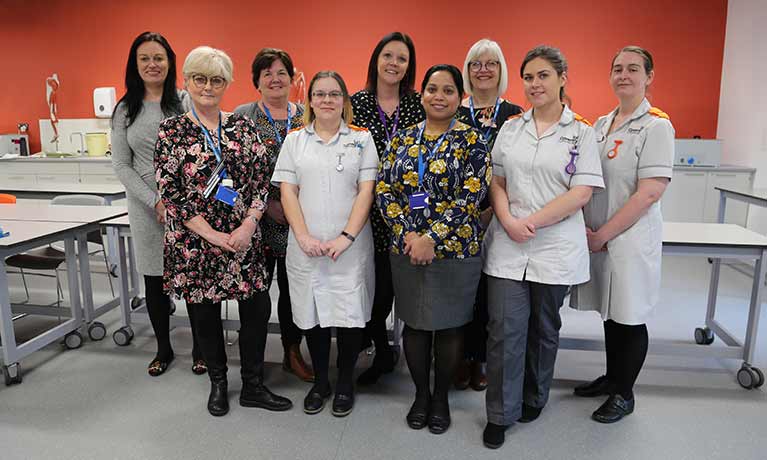Search
Coventry’s nursing apprenticeships up for two awards

Tuesday 05 March 2019
Press contact
A Coventry University apprenticeship course which prepares trainee nursing associates in an important new role in health and social care, has been shortlisted for two awards.
The nursing associate foundation degree course is a finalist in both the Health & Science Apprenticeship provider of the year the AAC awards, and the Student Nursing Times Nursing Associate Training Programme Provider of the year 2019.
Nursing associates assist, support and complement the role of registered nurses across the region and success of the growing training programme is being celebrated alongside National Apprenticeship Week 2019 #NAW2019.
The two year foundation degree course, which was set up as a pilot with funding from Health Education England in 2017, helps trainees develop their knowledge and skills while delivering hands-on care in hospitals and community settings.
In Coventry, the university is delivering training in partnership with South Warwickshire NHS Foundation Trust; University Hospitals Coventry and Warwickshire NHS Trust; Coventry and Warwickshire Partnership Trust; George Eliot Hospital NHS Trust; South Warwickshire GP Federation; and Coventry & Rugby GP Alliance.
There are currently around 95 trainees in Coventry with a further 28 enrolled at the university’s Scarborough campus.
Trainees typically spend one day per week studying, and the rest of the time learning in hospitals, health and social care organisations and community settings where they are supported by a mentor and experienced healthcare staff.
Nursing associate apprentice Emma Shankland, said:
Our tutors and course leaders are absolutely amazing and supportive, so it’s great that they’re being nominated and recognised on a national level.”
Associate professor at Coventry University Anne McCarthy, said:
We are absolutely delighted to be nominated for these two incredibly prestigious awards as it shows how much we have been able to achieve over the past two years.
It is fantastic to see our trainees mature and grow, and to be going out into clinical settings improving patient safety and quality of care, bridging that gap which we know exists in the clinical workforce.”





